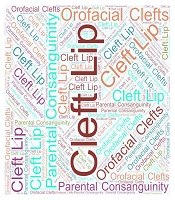Dear editor,
Consanguineous marriage is a marriage where the spouses are relatives and have common grandparents. In different societies, including Iran, marriage between relatives, particularly among third-degree relatives (such as cousins) is not only common but also desirable. A study in Iran showed that about 38% of marriages are between relatives (1). Due to the genetic commonalities of relatives, their children are more likely to develop autosomal recessive diseases.
Congenital anomalies are among the key factors related to mortality (2), hospitalization, and disability in the society, and approximately 3% of live births suffer from such abnormalities. Genetic factors, consanguineous marriage, medications, and drug abuse are the most essential risk factors for congenital anomalies. Numerous abnormalities are associated with consanguineous marriages, and the closer the kinship, the greater the likelihood of disease due to the proportion of common genes. The proportion of common genes in third-degree relatives is about one-eighth. In general, genetic diseases are more common in consanguineous marriages (3).
Cleft lip and palate are the most common congenital anomalies that occur alone or together and can also be seen with other congenital malformations. Overall, the incidence of orofacial clefts is estimated at 1.5 per thousand live births (4, 5). This rate varies in different populations. A recent study (6) on children born in Zahedan hospitals over an 11-year period found that among infants whose parents had hospital records, infants born of consanguineous marriages were about 4.5 times more likely to have orofacial clefts than infants born of non-consanguineous marriages, and about 82% of neonates born with cleft lip or cleft palate were born of consanguineous marriages.
Various factors are associated with the occurrence of different types of clefts, and almost 40% of all clefts can be attributed to genetic factors. Children with clefts suffer from numerous communication, social, and educational problems and low quality of life, and their treatment is also very complex, costly, and multifaceted.
Given the above, it seems that consanguineous marriage is a major risk factor for congenital anomalies, including non-syndromic orofacial clefts (NSOFC) (7) with an odds ratio of about 2 (8). Sabbagh et al. found that NSOFC was significantly correlated with consanguinity (odds ratio = 2.5) (9). This shows that the risk of having an infant with a cleft lip or cleft palate doubles if the parents have a consanguineous marriage.
In countries like Iran, where consanguineous marriages are both common and valuable, and the likelihood of developing congenital anomalies is rising given the societal beliefs supporting consanguineous marriages, policymakers in the health sector need to implement preventative strategies to minimize the prevalence of consanguineous marriages. Genetic counseling and the participation of key and influential people in the community in the process of designing and implementing health plans seem to be an inevitable necessity.
